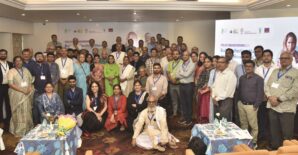To Achieve Total Irrigation, Nitish Kumar Must Subsidise Water Pumps, Not Electricity
Bihar is set to elect a new government in three months. Campaigning has started in all earnest despite the heat, humidity and the outbreak of the novel coronavirus.
Chief minister Nitish Kumar has announced that, if voted back to power, he would ensure the availability of irrigation facilities for 100% of agricultural land in the state. This is the first time in 31 years that an agricultural issue is at the centre of an electoral campaign in the state.
Government data shows that only 63% of the cropped area in Bihar is under irrigation. Field surveys, however, show that almost all cultivated area in Bihar’s Gangetic plains has access to irrigation with the possible exception of Tal and Diara areas. This was true even in 1997-98 when the World Bank undertook its Living Standards Measurement Survey (LSMS). A recent CSISA-ICAR survey across 31 districts of Bihar also found that almost all of the 6,000 farmers irrigated their land at least once.
Farmers already have access to irrigation in Bihar. What they need is access to is affordable irrigation. Irrigation is expensive for farmers in the state since many use diesel pumps – diesel is expensive and diesel pumps are inefficient. A farmer using a diesel pump effectively pays Rs 18-20/kWh energy, which is three to four times more than the full cost of electricity.
Expensive irrigation forces Bihar’s farmers to over-economise on water application even when the state is situated above one of the world’s richest aquifers. Under-irrigation leads to low crop yields, high vulnerability to droughts and heatwaves, and very little cropping in the summer season.
The high cost of irrigation is one reason why agriculture is a high-risk, low-returns enterprise in Bihar. It is no surprise then that the 2013 Situation Assessment Survey of Farmers found that among all the states of India, Bihar had the highest percentage of farmers who were unhappy with their occupation.
The power supply situation in Bihar has been improving rapidly. All 45,103 villages in the state are now connected to the grid and the average number of hours of power supply has increased from 12 hours per day in 2014 to 18 hours in 2019.
Total electricity consumption has also gone up from 8.2 billion units in 2013-14 to 23 billion units in 2019-20. This change is visible even in the satellite images of night lights. Agriculture has also benefitted from these developments. The number of electric pump-sets has increased from 48,500 in 2014 to 2.53 lakh in 2019 and the state government is building 296 new power substations and 1,312 dedicated feeders for the farm sector. Separate feeders and installation of new supply lines will help improve the quality and reliability of power supply, reduce technical losses, and allow more reliable accounting of electricity consumption by farmers.
As is the case in other states in India, the government of Bihar is also heavily subsidising electricity for farmers. A pump owner with a flat rate connection pays Rs 168/hp/month for electricity where the unit rate is Rs. 0.96/unit plus a fixed monthly charge of Rs 30/hp. Cheap electricity for irrigation leads to wasteful use of both energy and water and imposes a heavy burden on the state’s budget. It also makes utilities unviable and unwilling to serve farmers.
Over the last five years, Bihari farmers have invested Rs 5 billion for the installation of more than 200,000 new electric pumps. The state government must do its part to ensure that the power supply keeps improving. It will be difficult to maintain quality power if the tariffs are so low, especially, if the power consumption for irrigation increases. Farmers who were paying Rs 18-20/unit of energy will be thrilled if they have to pay only Rs 4-5 per unit for a reliable supply that is available at the flick of a switch.
Less than 10% of farmers in Bihar own pump-sets. The other 90-95% rely on pump rental markets for irrigation. Cheap energy for irrigation does not guarantee more competitive rental markets. Markets work better for water buyers if getting a new pump connection is easy and inexpensive for everyone. If the promise is to ensure affordable access to irrigation to every farmer, then the state would do much better to spend its scarce revenues on capital subsidies for pumps and pump connections and not on power subsidies.
Affordable irrigation alone will not be enough to break the agrarian stagnation in Bihar. A sharp increase in the number of electric pumps in the neighbouring state of West Bengal after 2011 has not translated into big gains for the farmers. The state government needs to combine the provision of irrigation with public procurement of rice and wheat and improved access to markets for high-value crops. Irrigation, by itself, won’t spur the agrarian transformation Bihar desperately needs if farmers do not get decent prices for their produce.
Avinash Kishore is a Research Fellow at the International Food Policy Research Institute (IFPRI), South Asia. This article was originally published in The Wire .




